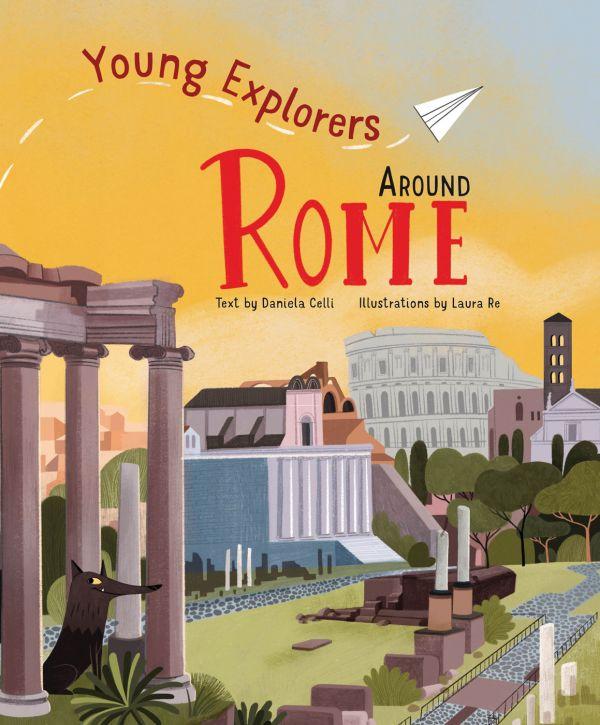
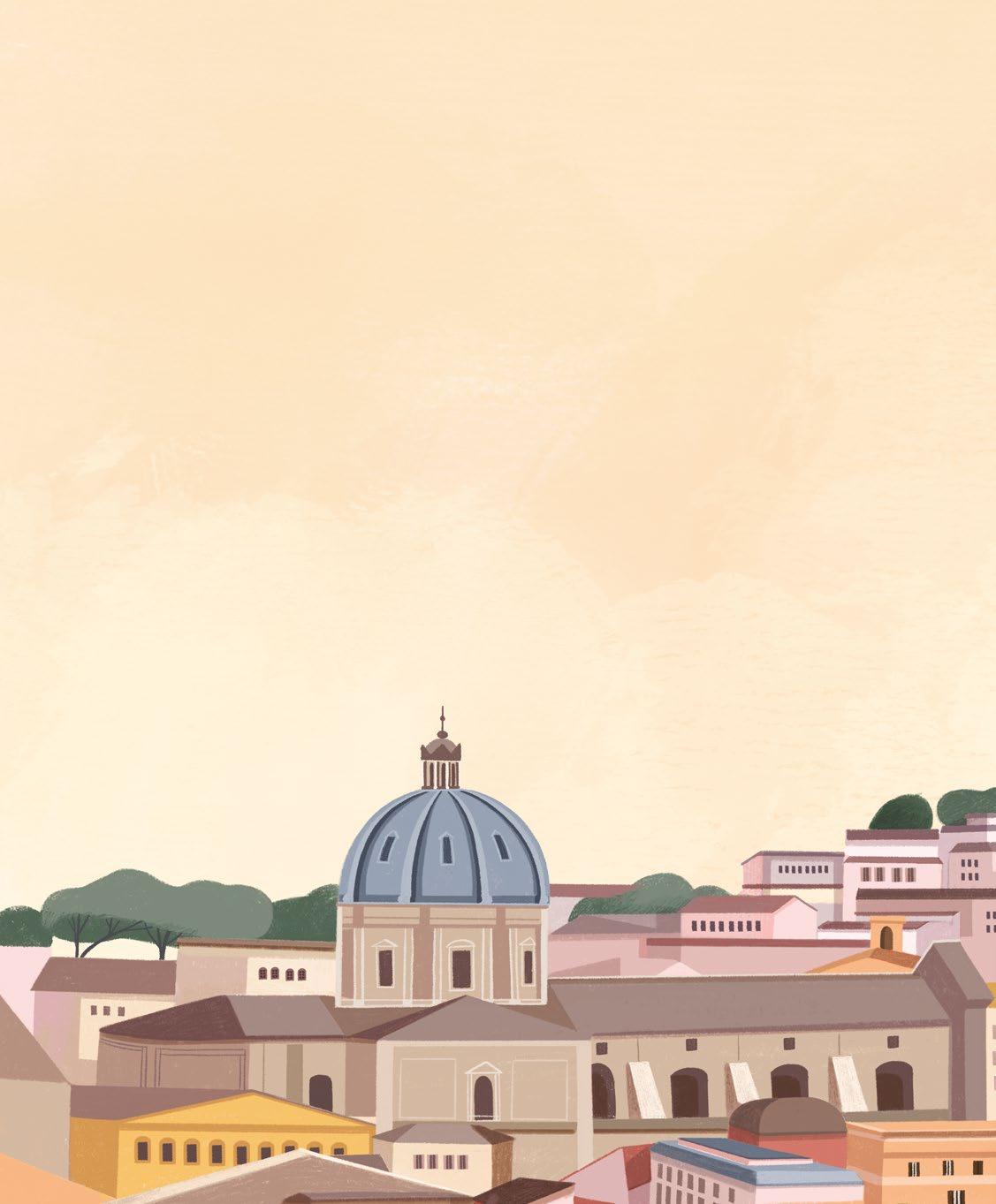



“Quanto sei bella Roma” (How beautiful you are, Rome). These are the lyrics from a popular Italian song from the 1930s, and while no one would disagree with this sentiment, you may feel overwhelmed at the mere thought of exploring the Italian capital with children. Where do you start in a city that has over nine hundred churches, dozens of museums, and even an entire country within it?
The answer’s simple: let your children choose where they want to take you, with the help of this guide and the stories it tells.
It doesn’t contain everything that the Eternal City has to offer, as visiting (or describing, for that matter) it all would be impossible!
HOWEVER, YOU WILL FIND FOUR FUN ITINERARIES FOR CHILDREN, FULL OF LEGENDS AND FUN FACTS, DESIGNED TO HELP KIDS LEARN ABOUT A METROPOLIS WHERE EVEN THE STREET NUMBERS HAVE A STORY TO TELL.
You can use this book to play-travel at home - and to really travel, of course! I’ve included all the things that my own kids loved when they were little, which I hope will enchant you as much as they do your little explorers.
Tomyparents(allfourofthem!),whoshowedme thebeautyoftheworld,andgaveme thefreedomtoexploreit.
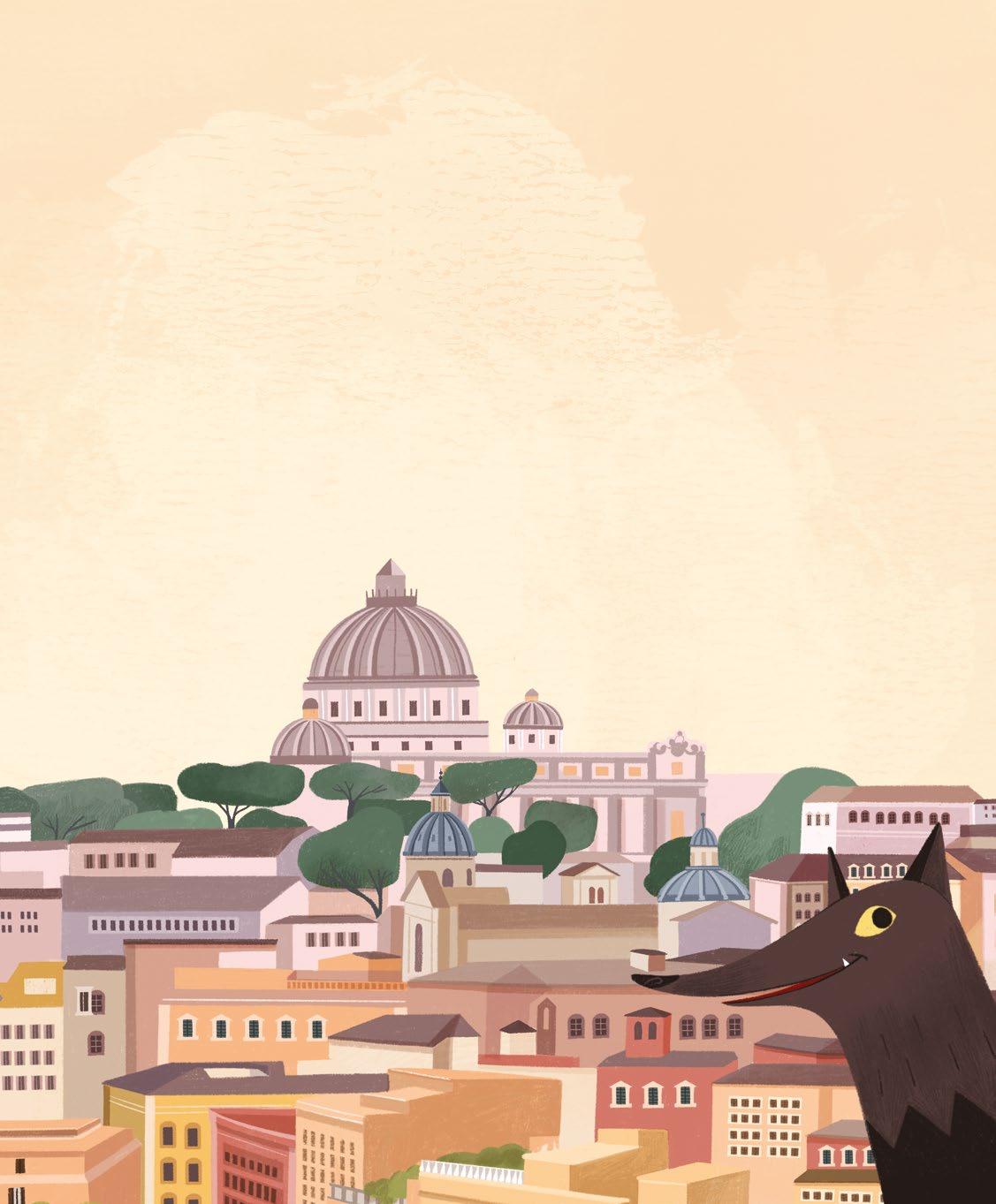
Good morning, little explorers!
My name’s Lupetta, which means “little she-wolf,” and my family has lived in Rome for as long as we can remember! I’m so excited to show you around my beautiful city.
Every single stone in Rome has a fascinating, mysterious, or curious story to tell, so I assure you we won’t ever get bored!
Did you know, for example, that a cannon is fired on the Janiculum Hill every day at noon? Or that there’s a bizarre lie detector in the Ripa neighborhood?
If you’re curious to know more, then let’s get going!
We’ll explore thanks to four fun itineraries, which will take us up and down the streets of the Italian capital, exploring hills, squares, palazzos, and ancient ruins. We’ll even be taking a trip abroad!
Each itinerary starts with a map, which shows all the places we’ll be visiting.
If you get thirsty, we can stop at one of the many nasoni (drinking fountains), and if you get hungry (I’m always hungry!), well, Rome is full of delicious things to eat.
Finally, between one wonder and another, we’ll have time to play a few games. And don’t forget to keep your eyes open!

Map
Villa Borghese
Piazza di Spagna
Map
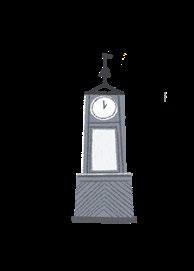
Trevi Fountain
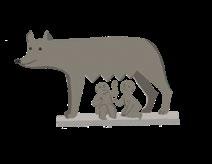

Palazzetto Zuccari and the Capuchin Crypt
ITINERARY 2
The Sistine Chapel
Castel Sant’Angelo Piazza Navona
The Vatican and St. Peter’s
Via della Gatta (Palazzo Grazioli)
Pantheon



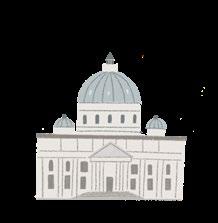
Saint Ignatius of Loyola
p. 6 p. 14 p. 16 p. 18 p. 20 p. 22 p. 23 p. 26 p. 24 p. 8 p. 10 p. 11ITINERARY 3
Janiculum Hill

Mouth of Truth
Map
p. 30 p. 32 p. 33
p. 36
Aventine Hill
ITINERARY 4
Colosseum
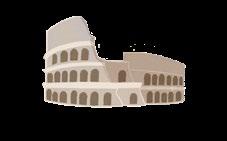
Roman Forum
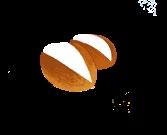
Trajan’s Column

Capitoline Hill
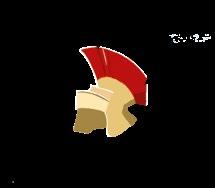
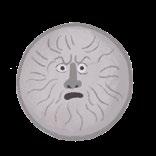
Tiber Island
Capitoline Museums

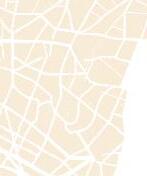
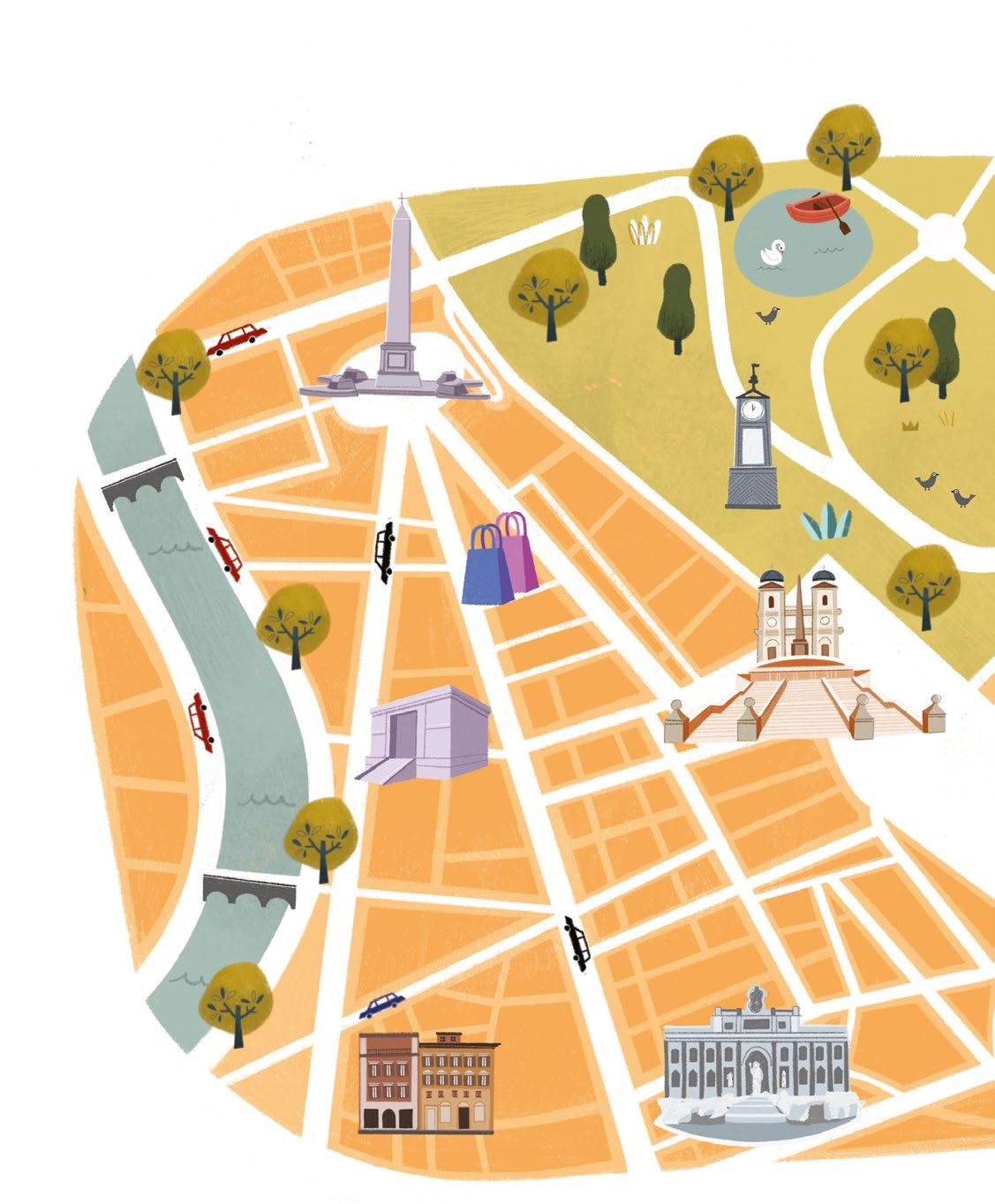
Good morning, kids.
Welcome to the Eternal City!
1
villa borghese park
piazza di spagna
2
trevi fountain
5

Our first day in Rome will start with a visit to a wonderful park in the middle of the city. After taking a fun boat ride, and seeing a “half-sunken ship,” we’ll go on a monster hunt, then head down into a mysterious underground tunnel covered in skeletons, and finally stop in Piazza di Trevi, where an important mission awaits us.
palazzetto zuccari
3
4
capuchin crypt
Rome’s old city center is divided into 22 districts : the first is Monti , a neighborhood which spreads over three hills, and the last is Prati , whose symbol is CASTEL SANT’ANGELO. Keep your eyes open as we walk around the city: each neighborhood is indicated by a plaque bearing a NUMBER, its name, and a coat of arms that tells a story about a small part of the city.
• An Ancient Nickname
The first person to call Rome the ETERNAL CITY was a Latin poet who lived more than two thousand years ago.
IT WAS SUCH A PERFECT NICKNAME THAT IT HAS BEEN USED EVER SINCE!
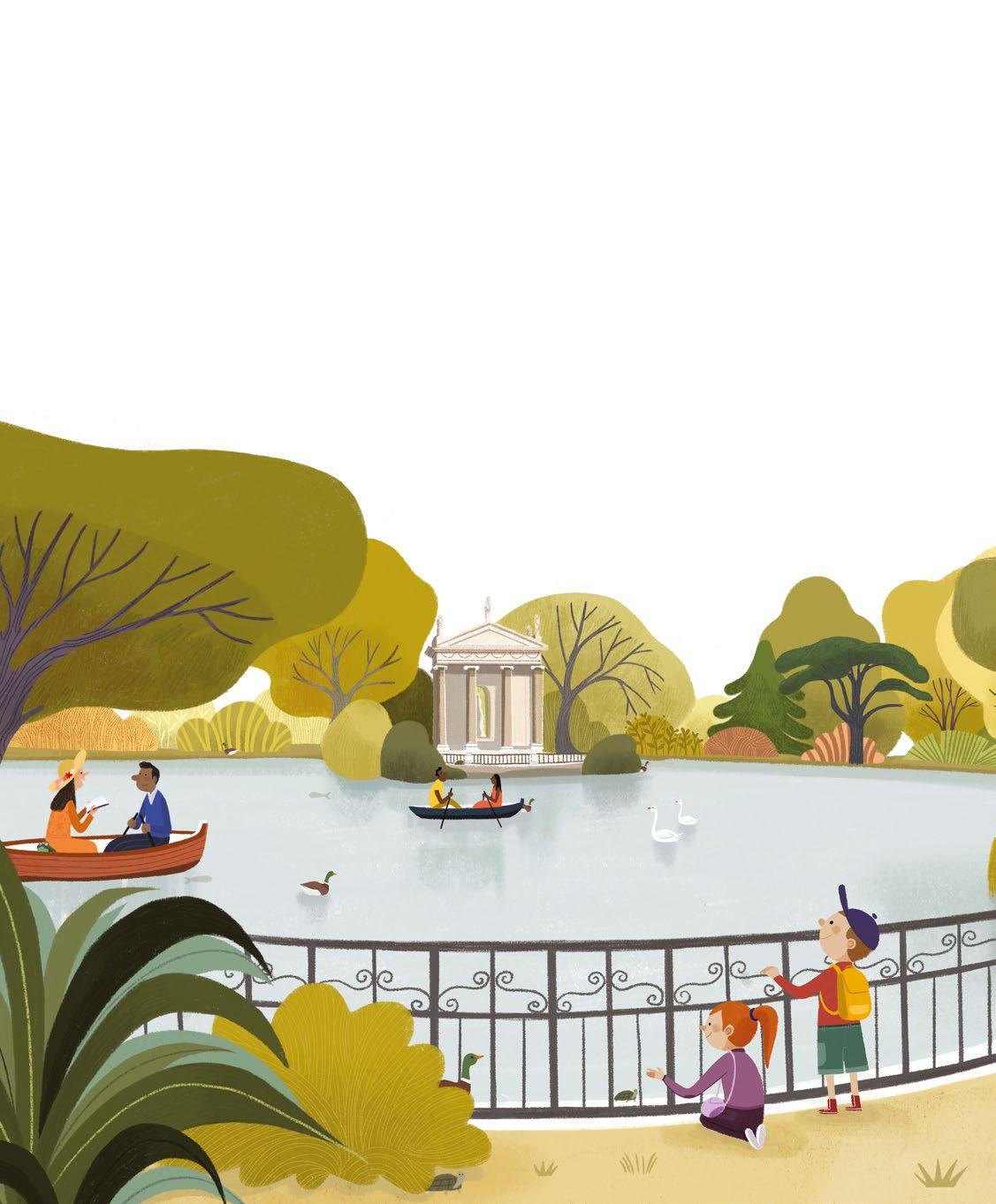
Should we start exploring the city from one of its amazing green spaces?
Villa Borghese is one of the largest urban parks in Europe! It’s an OASIS in the heart of the city, where you can skate, cycle, or have a picnic, or even admire the artwork in the Borghese Gallery, pretend you’re a sailor, watch a PUPPET show at the San Carlino theater, or see a movie in the world’s smallest theater!
Villa Borghese’s beautiful lake is in the center of the park. You can rent a rowboat, then navigate your way around the islet that houses the temple of Asclepius, the God of Medicine. Just steer clear of the ducks and swans as you go!
• A Water Clock
Just a stone’s throw from the panoramicterraceon the Pincian hill , there’s an INGENIOUS INVENTION that was made by a Dominican friar in 1867.
The pendulum of this unusual clock moves thanks to water, which falls from above and fills two basins.

CLEVER, ISN’T IT?
WHY DON’T YOU GO PLAY ON THE LAKE, WHILE I, UM... I’LL WAIT FOR YOU ON LAND: THIS LITTLE WOLF ISN’T CRAZY ABOUT WATER!
Can you find all the animals in the pond?

Welcome to Piazza “inagone”!
No, I haven’t mixed up the name! In ancient Rome, that was what this square was called. In Latin, agones means races or games, and in fact back then the square was a STADIUM, where athletes could compete in front of 30,000 spectators!
Later “agone” became “navone,” and eventually Navona!
In 1652, POPE INNOCENT X inaugurated a very curious custom: in the summer, when it was very hot, the spouts on the three fountains were left open, thereby allowing the water to flow into the square.
Piazza Navona then became a small LAKE that citizens not only used to cool off, but also to have lots of fun: there were wooden and papiermâché boats, gondola-shaped carriages, and musicians who played standing in the water!

In the center of the square, there’s the stunning Fountain of the Four Rivers, which are personified in four huge statues. The monument was designed by the famous sculptor GIAN LORENZO BERNINI.
What rivers are they? Well, the giant figure surrounded by prickly pears represents the Rio de la Plata in South America. The one with his eyes covered is the Nile . The statue holding the oar is the Ganges . And the fourth one is the Danube .

The Sistine Chapel is one of the world’s greatest artistic and cultural treasures. It was built in the 15th century, at the behest of POPE SIXTUS IV.
In 1508, the Pope asked MICHELANGELO to fresco the huge ceiling, the surface of which is 5,382 square feet (500 sq. m): A TRULY TITANIC JOB!
One of the first problems that MICHELANGELO encountered was how to reach the 65-foot (20 m) high ceiling. The artist designed a simple wooden platform that rested on supports anchored near the windows, leaving the space below free, yet at the same time making it impossible to see his work. Michelangelo painted standing up, looking up at the ceiling, non-stop for FOUR YEARS. It’s said that he was so absorbed in his work that he didn’t even go home to sleep! This caused him severe muscle aches, dizziness, and problems with his eyesight.
Michelangelo was only commissioned to paint the TWELVE APOSTLES, but when he finished, he’d painted over THREE HUNDRED figures! The extraordinary artist illustrated the entire history of humanity before the Ten Commandments: the Creation of Adam, the story of Noah, the Book of Genesis, and the Old Testament. It’s said he didn’t trust anyone, and that he painted almost the entire ceiling by himself!

Come on, let’s get moving. We have to make it up the hill before noon!
Rome’s eighth hill is close to Vatican City . From up here, you can take in a magnificent view of the metropolis below. And every day at noon, a cannon is fired.
BOOM!
Don’t worry, kids! It’s perfectly safe!
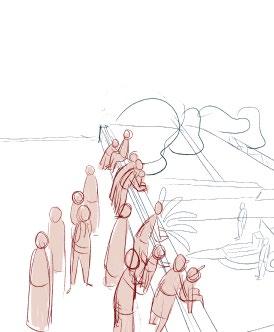
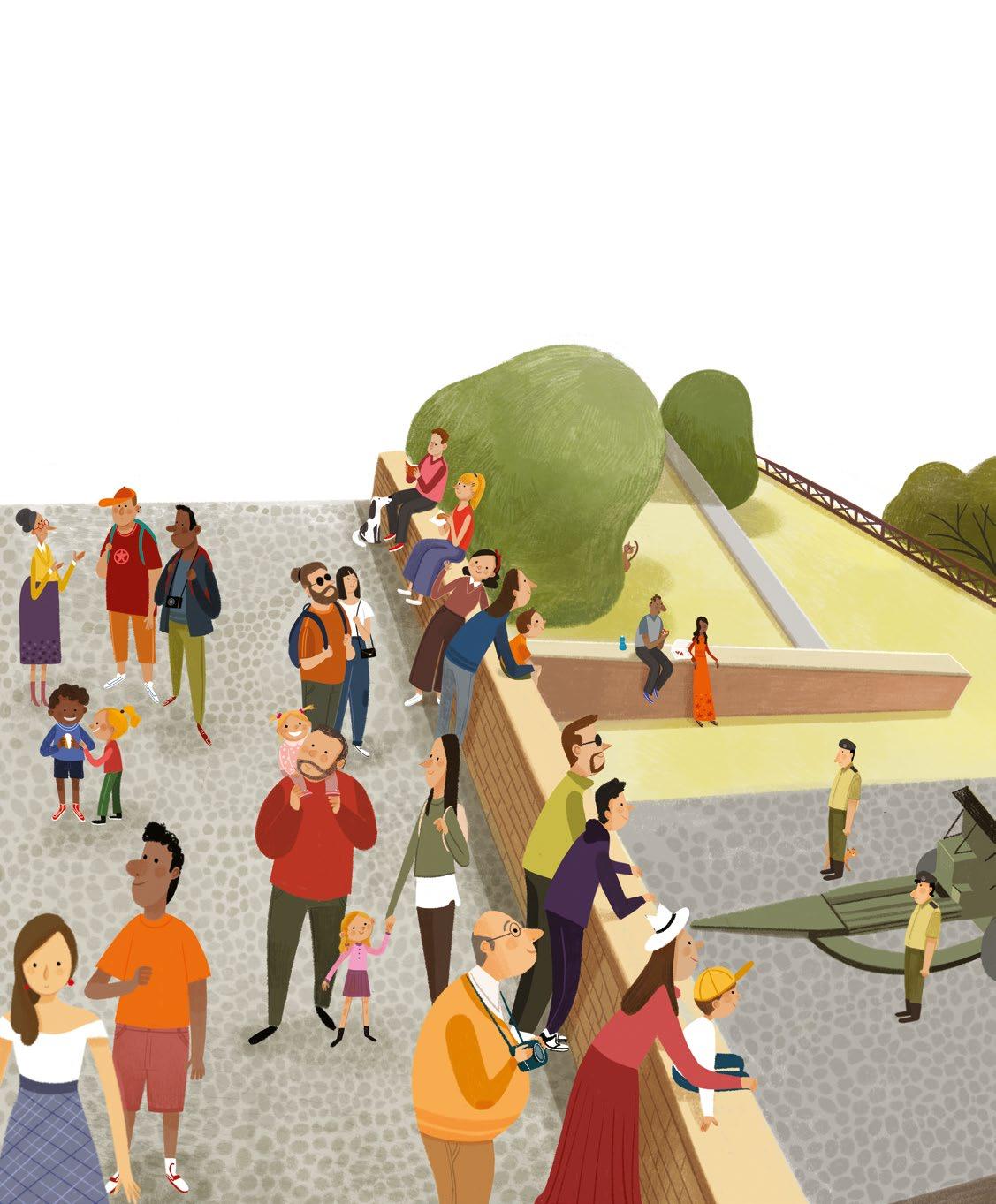
It’s said that a long time ago, in 1847, POPE PIUS IX was annoyed by the fact that the midday bells never rang at the same time.
To solve this problem, he ordered a CANNON to be fired every day at exactly 12 o’clock...
...SO THAT THE BELL-RINGERS WOULDN’T HAVE ANY MORE EXCUSES!
On the beautiful walk up the Janiculum Hill, there’s even a lighthouse. But what’s a sentry of the sea doing here, if there’s no sea?
Actually, this splendid monument has nothing to do with sailing. It was a gift from a committee of Italians living in Argentina. On special occasions, the lantern projects the colors of the Italian flag onto the city’s rooftops.
CAN YOU TELL ME WHAT THEY ARE?



every statue, every monument, and almost every stone in rome hides a story, a legend, or a myth
DO YOU KNOW WHAT MYTHS ARE? They are stories recounting the deeds of gods, demigods, or even monsters, such as GIANTS. They were written to explain certain events, to answer certain questions, or to celebrate feelings of strength, courage, hatred, or love.
I’M GOING TO TELL YOU TWO OF THEM.
• Hercules and the Monster of the Aventine Hill
It’s said that somewhere on the Aventine Hill, there was a cave inhabited by the terrible giant CACUS, a fire-breathing creature with yellow teeth, whose body was covered with hair. One day, HERCULES, the demigod with extraordinary strength, arrived in Rome with a herd of beautiful red cows he’d stolen from the giant GERYON. Tired, he fell asleep near the Tiber, but upon his awakening he discovered that some of the cows had disappeared. CACUS HAD STOLEN THEM. Hercules went into the giant’s stinking cave covered with bones, and killed him with his club.
THE NEWS SPREAD, AND TO CELEBRATE THE HERO, THE PEOPLE BUILT AN ALTAR IN HIS HONOR.

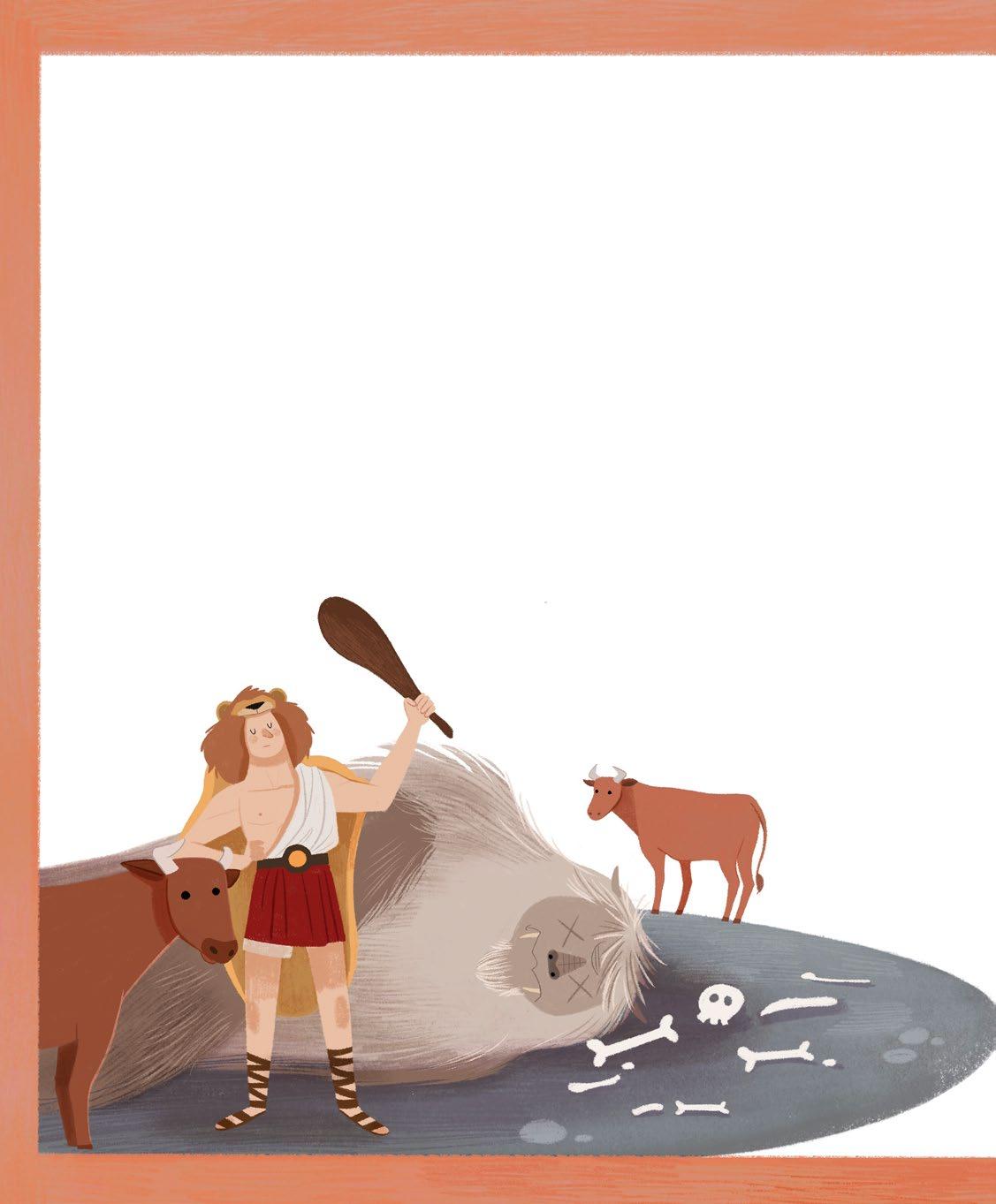

The ancient city of Troy was besieged by the GREEKS, who used a brilliant strategy to burn it down. Some soldiers hid inside a huge WOODEN HORSE, which the Trojans had brought inside the city walls, believing it was a gift for the gods. But when night fell, the Greeks dropped out of the big wooden animal and destroyed the city while everyone was asleep. That same night, a fearless hero named AENEAS dreamed of his friend HECTOR announcing the defeat, urging him to set out to found a new city. And so he did. After countless adventures, Aeneas reached Italy and got married. Do you know who two of his descendants were?
ROMULUS AND REMUS! TURN TO PAGE 47 TO LEARN MORE!


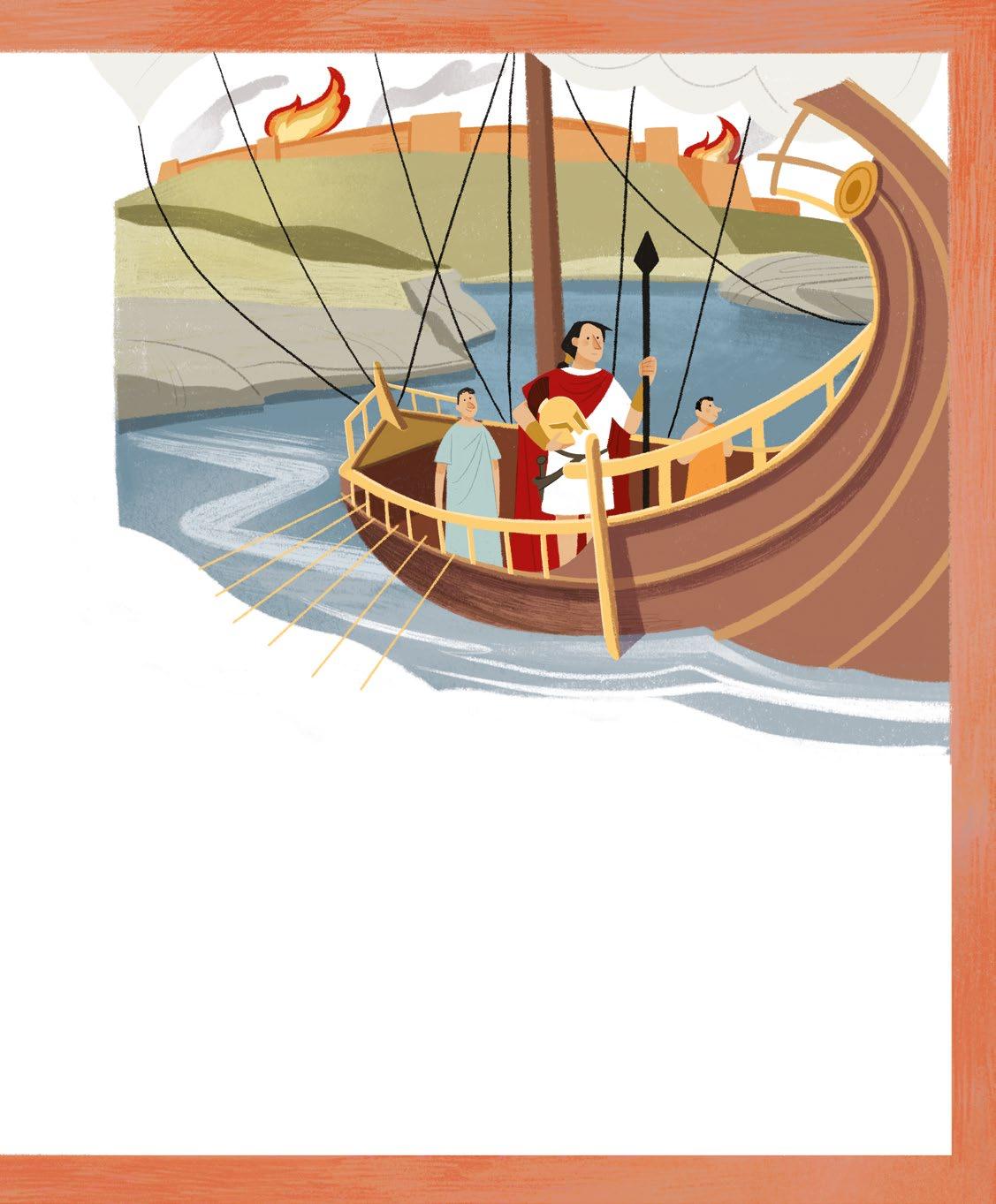

Welcome to the largest Roman amphitheater in the world!
Roman Emperor VESPASIAN ordered the Colosseum to be built between 70 and 72 AD, almost 2,000 years ago! To celebrate its completion, his son TITUS, who had succeeded his father, inaugurated the amphitheater with one hundred days of games. The gigantic arena had, in fact, been built to offer citizens a place for entertainment. Thousands of spectators could watch shows, re-enactments, fights, and even real naval battles!

In the morning, shows with ANIMALS were held in the Colosseum. Titus had them sent from all over the empire: ostriches, lions, crocodiles, bears, camels, and many other exotic species, which appeared in front of the audience as if by magic, pulled up into the arena in invisible “elevators.”
Sadly, they were often cruel games: fights and combat in which both men and animals lost their lives.
Gladiators fought in the afternoon. They were usually slaves, criminals, prisoners of war, or men who’d been sentenced to death, who had been trained rigorously.
THE BATTLES TOOK PLACE IN THE ARENA, A WOODEN PLATFORM COVERED IN SAND, WITH TRAP DOORS AND HOISTS CONNECTED TO THE UNDERGROUND TUNNELS, USED TO MAKE THE BATTLES MORE “SPECTACULAR.”
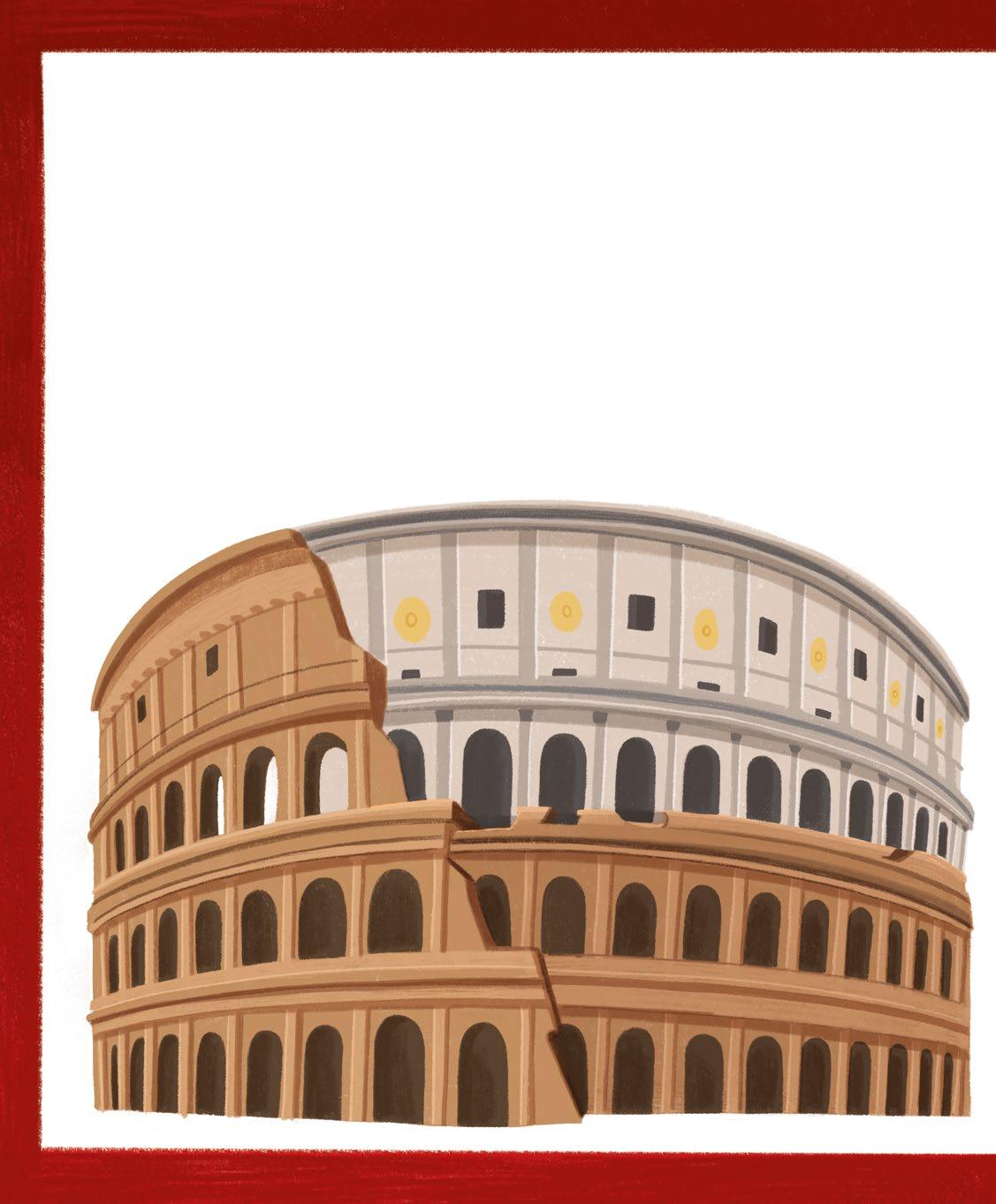
Originally it was called the FlavianAmphitheater , but in the Middle Ages everyone began calling it the Colosseum . In Latin, colosseum means colossal, GIGANTIC, and, given the huge size of the monument, it’s easy to see why they chose this nickname.
According to other sources, however, the adjective referred to a huge statue of NERO that was close to the arena.
It seems that the Colosseum was equipped with a special mechanism that could fill the arena with WATER. The amphitheater therefore became a “sea” on which thousands of prisoners fought each other aboard biremes, triremes, and quadriremes, which are types of ancient boats!
When the weather was bad, or on hot, sunny days, expert sailors from an offshoot of the Roman fleet would COVER the amphitheater with a sort of awning. When it was especially hot, jets of SCENTED WATER were sprayed on the spectators to, um…combat bad smells.
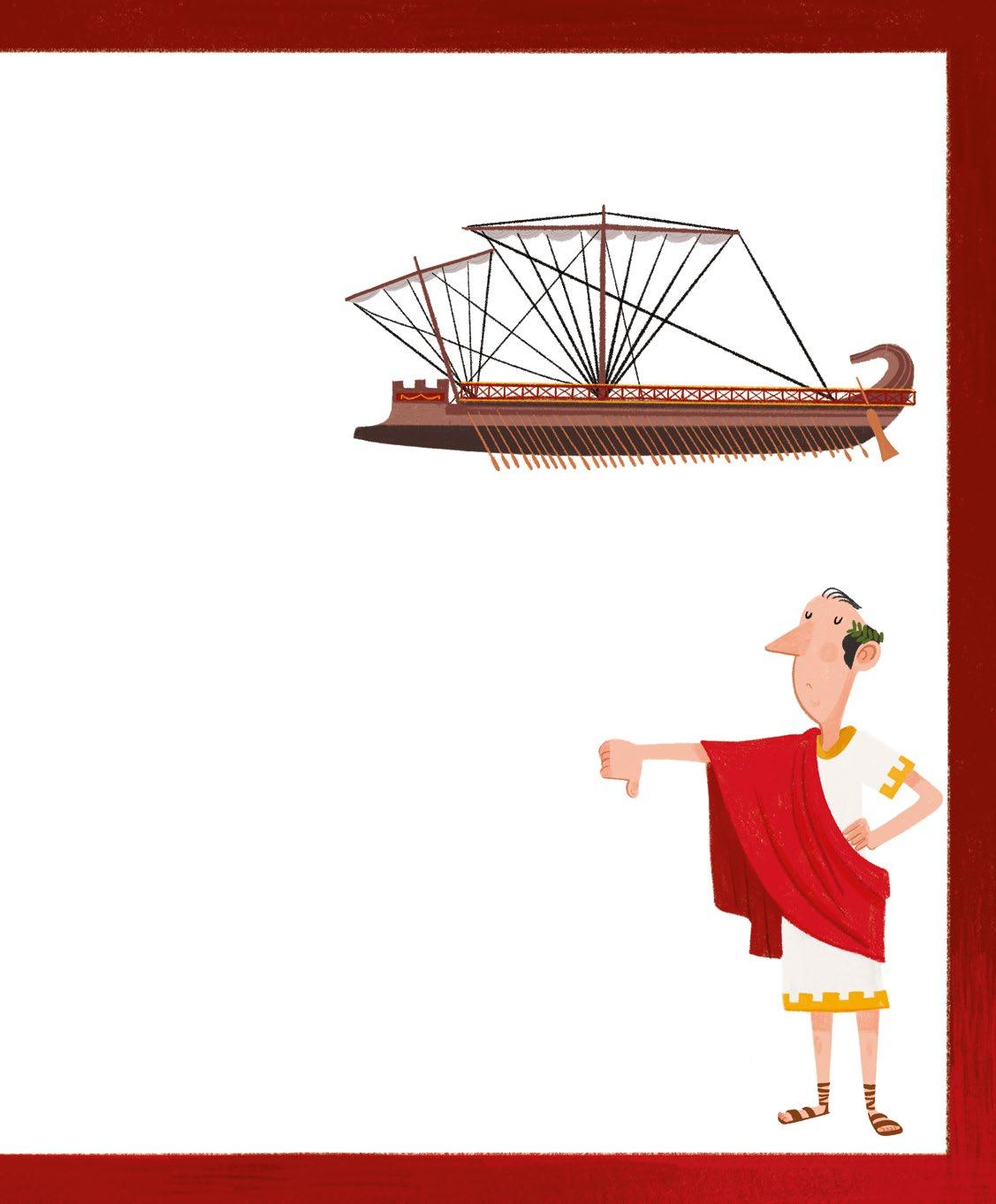
In many modern gladiator films, the emperor decides to save the defeated fighter by turning his thumb up. If, on the other hand, he decides to condemn them to death, he turns his thumb down.
Actually, it seems that this isn’t how it worked in ancient Rome: a thumbs up symbolized a drawn sword that kills, while a clenched fist indicated the sword being put back in the scabbard.
PRACTICALLY THE OPPOSITE!